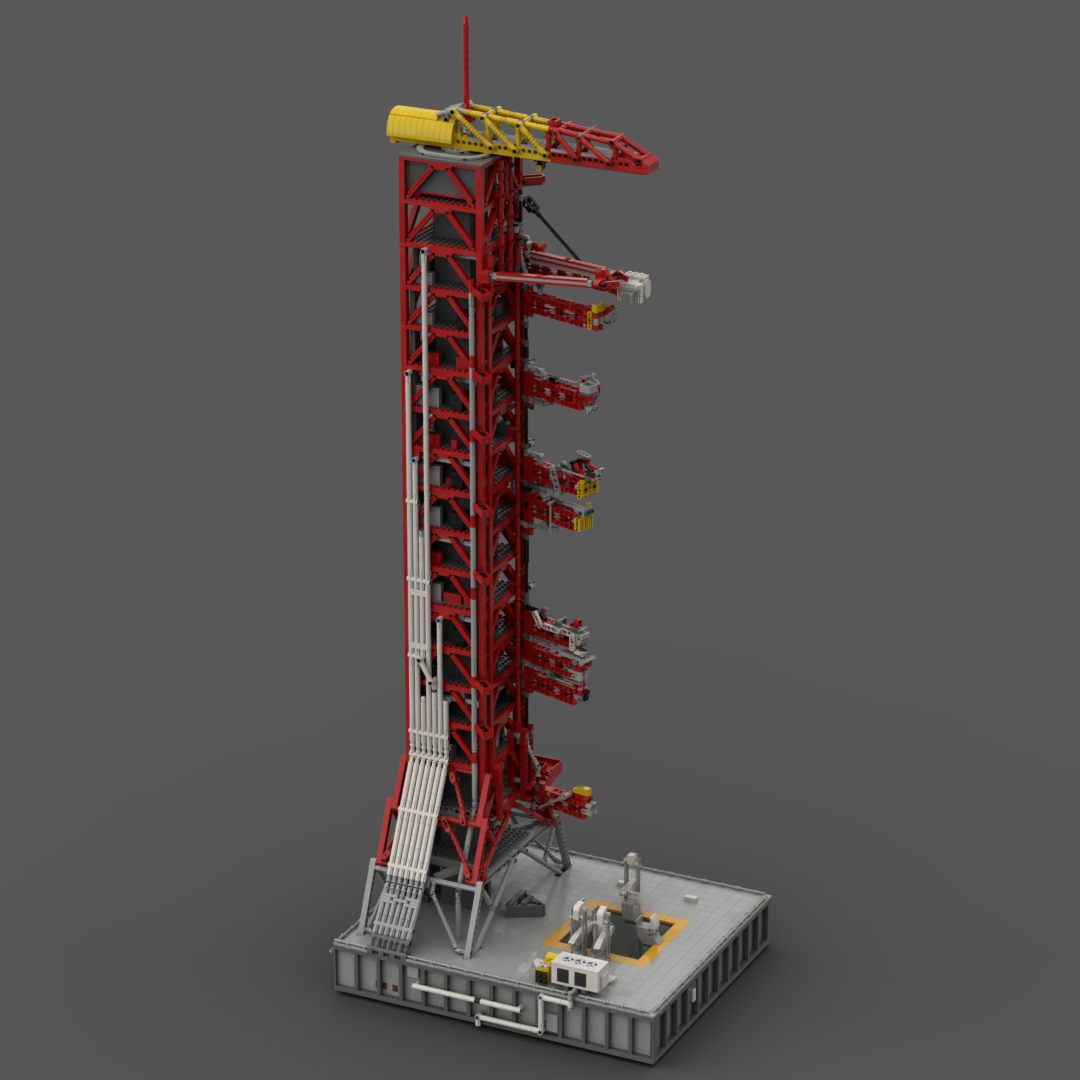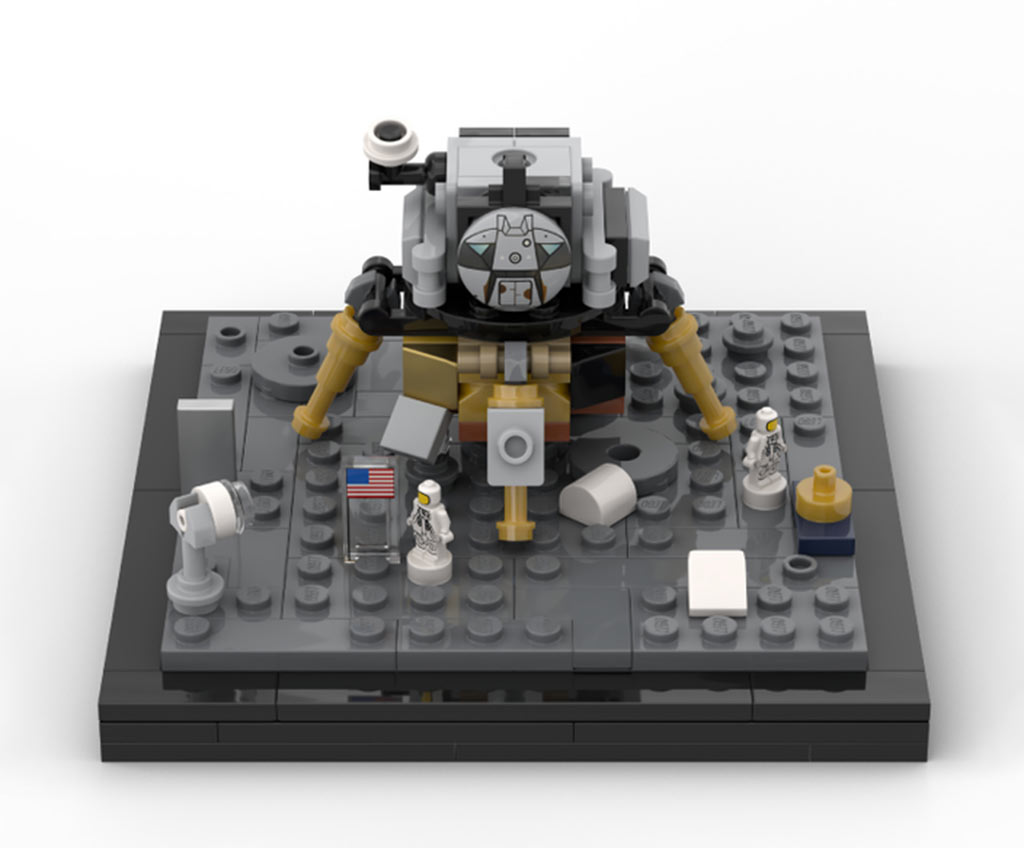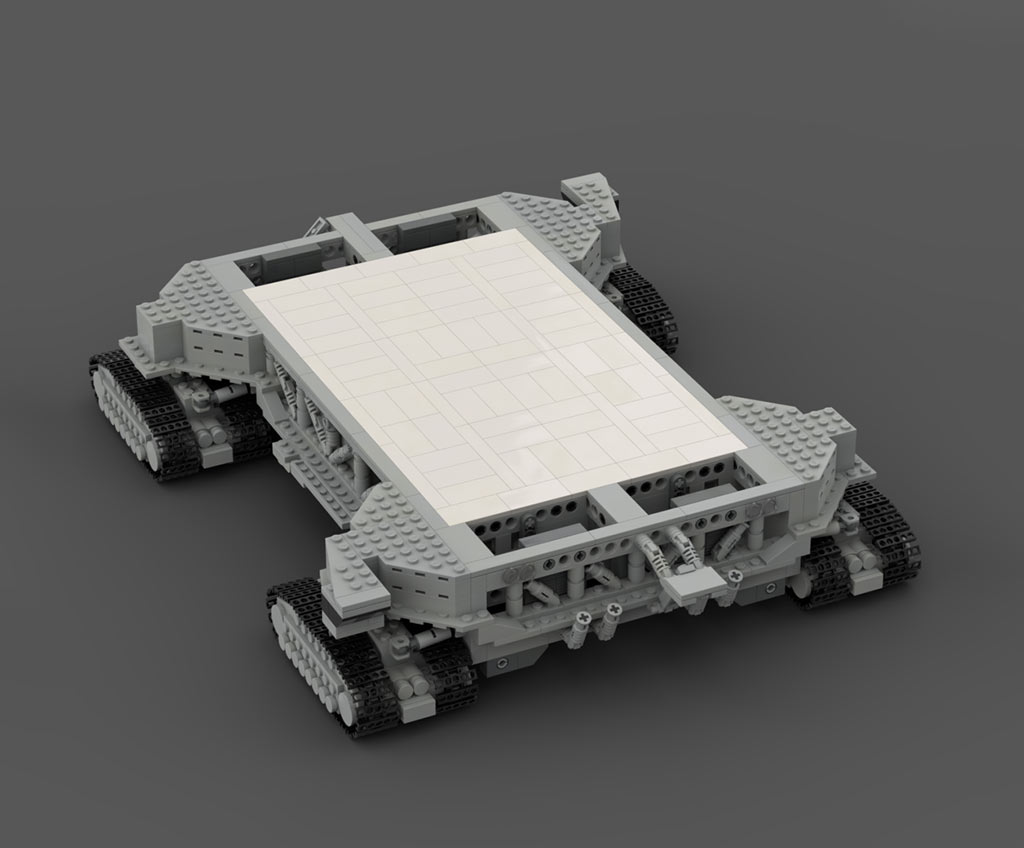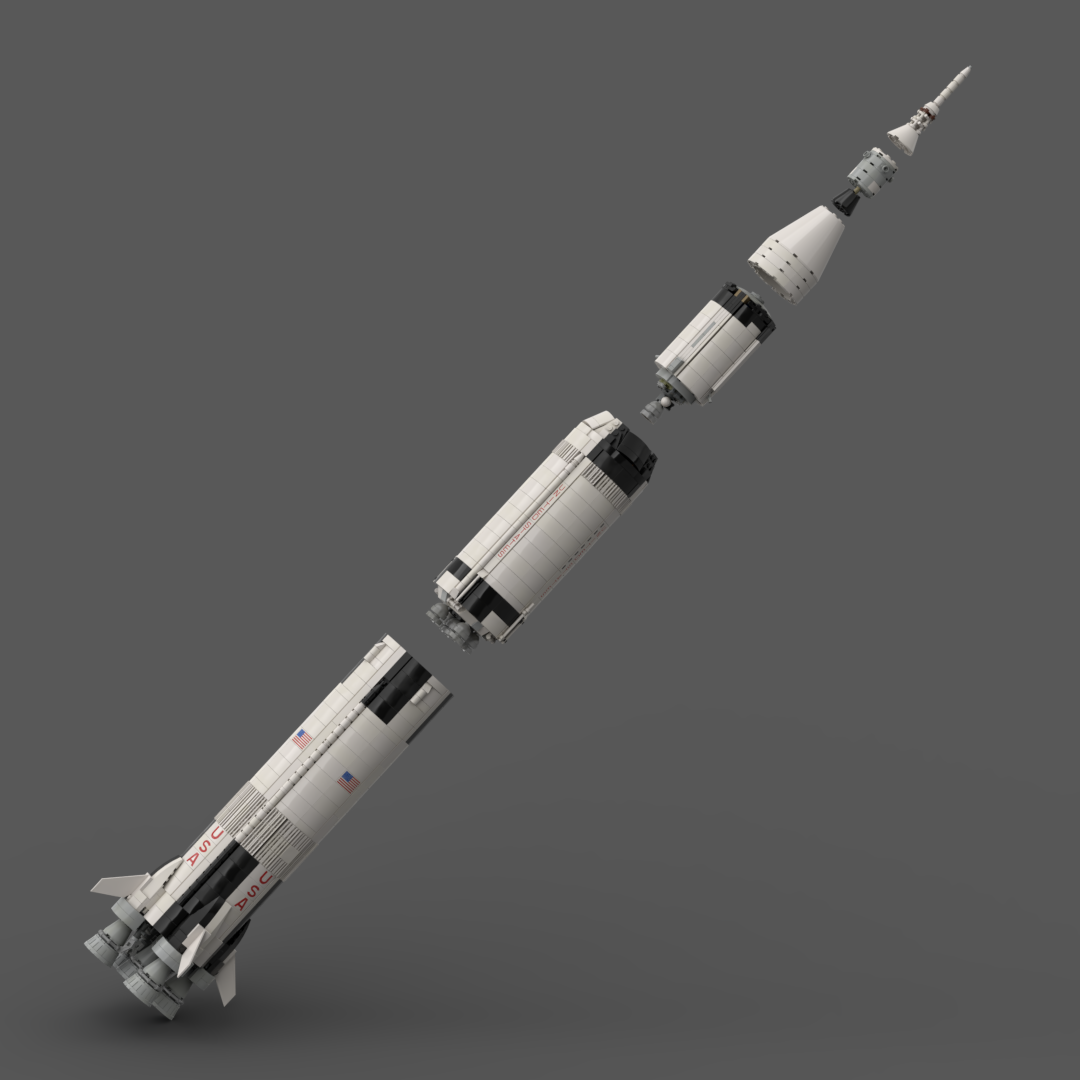
LEGO Designer:
Nathan Readioff
Designed:
July 2018
Categories:
Launch Pads, All, Apollo Program, Space Agency - NASA
Launch Vehicle Details
Stages:
Length:
Diameter:
Mass at Launch:
Low Earth Orbit Capacity:
Total Thrust:
Apogee:
Class:
Launch Complex 39a is a rocket launch site at the John F. Kennedy Space Center on Merritt Island in Florida, United States. The site and its collection of facilities were originally built as part of the Apollo program’s “Moonport”, becoming operational in 1967 and later modified for the Space Shuttle program.
It was designed to handle launches of the Saturn V rocket, the largest, most powerful rocket then designed, which would propel Apollo spacecraft to the Moon. Initial plans envisioned four pads (five were considered) evenly spaced 8,700 feet (2,700 m) apart to avoid damage in the event of an explosion on a pad. Three were scheduled for construction (A, B, and C, to the southeast), and two (D and E, west and north) would have been built at a later date. The numbering of the pads at the time was from north to south, with the northernmost being 39A, and the southernmost being 39C. Pad 39A was never built, and 39C became 39A in 1963.
The first launch from Launch Complex 39a came in 1967 with the first Saturn V launch, which carried the uncrewed Apollo 4 spacecraft. The second uncrewed launch, Apollo 6, also used Launch Complex 39a. With the exception of Apollo 10, which used Launch Complex 39b (due to the “all-up” testing resulting in a 2-month turnaround period), all crewed Apollo-Saturn V launches, commencing with Apollo 8, used Launch Complex 39a.
A total of thirteen Saturn Vs were launched for Apollo, and the uncrewed launch of the Skylab space station in 1973. The mobile launchers were then modified for the shorter Saturn IB rockets, by adding a “milk-stool” extension platform to the launch pedestal, so that the S-IVB upper stage and Apollo spacecraft swing arms would reach their targets. These were used for three crewed Skylab flights and the Apollo-Soyuz Test Project, since the Saturn IB pads 34 and 37 at Cape Canaveral AFB had been decommissioned.
From 1967 to 2011, three MLPs were used at the Launch Complex 39a to support NASA’s launch vehicles, and will be used for commercial launch vehicles. Formerly called “Mobile Launchers”, the MLPs were constructed for transporting and launching the Saturn V rocket for the Apollo program lunar landing missions of the 1960s and 1970s. Each MLP originally had a single exhaust vent for the Saturn V’s engines. The MLPs also featured a 380-foot-tall (120 m) Launch Umbilical Tower (LUT) with nine swing arms that permitted servicing of the vehicle on the launch pad, and swung away from it at launch.
Downloads
PDF instructions
Digital builds
Bricks in Space – E-book Series
Bricklink files
Right click – “save file as…” and you’ll be able to download the BSX file.
The BSX file is useful for inputting the parts into a Bricklink wanted list.
This is a model of the Apollo 11 Launch Umbilical Tower and Mobile Launch Platform (MLP). The model is a faithful 1:110 scale recreation of the entire launch tower. Many technical drawings and photos were consulted over the last twelve months in an effort to make the model as accurate as possible, although a few details (such as the placement of the fuel pipes and environment ducts) are not readily available and required some educated guesses.The model has several features:
- Raise the damper arm once roll out is complete!
- Rotate the crane away from the rocket (crane is non-functional)
- Retract the crew access arm once the astronauts are aboard!
- Pull back the eight service arms once the countdown reaches zero!
- Rotate the three tail service arms!
Bricksafe gallery which includes WIP imagery can be viewed here
Part count: 8189 bricks, 491 lots.
| Unit | width | length | height |
|---|---|---|---|
| Studs | 50.5 | 58.1 | 156.2 |
| Inches | 15.9 | 18.3 | 49.2 |
| Centimetres | 40.4 | 46.5 | 125.0 |
No external URL provided.
Launch History information from space.skyrocket.de
Launch History information from space.skyrocket.de





